Beneficial Wild Creatures In Your Garden Guest Blogger, Keri Dearborn
(After talking with my friend Keri Dearborn over at AnimalBytes.net, I got the idea to have her write this blog post. She is an expert on wildlife and a gardener herself, so it seemed the perfect combination. Enjoy! -- Douglas)I see my garden as an oasis of native habitat in a nature-hostile world. If I can sit on my patio and watch an Allen's hummingbird raising her latest batch of fledglings or pick up a pot and find a slender salamander hunting for earthworms, my faith in the resilience of the planet is restored.
But some wild visitors offer more than beauty and soul rejuvenation. These critters are beneficial to your garden or to you directly. You should be inviting them into your garden and encouraging them to stay.
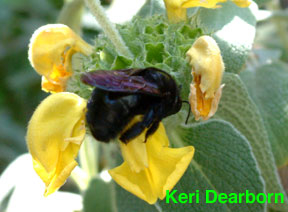 Super Pollinators
Super PollinatorsWe all learned about honey bees in Elementary School. While a great producer of honey, the European honey bee is not an efficient pollinator. It also is in serious trouble with introduced diseases. Native bees, like that big black valley carpenter bee that comes through your yard at the same time every day and the California bumble bee with its single stripe of yellow are much better at pollinating plants. These bees live in small groups or are solitary. They are docile and seldom sting.
But bees aren't the only pollinators. Many plants are pollinated by flies, wasps, beetles and other insects. A flower fly may look like a skinny bee hovering over your flowers, but this fly does double duty: it's an important pollinator and their larva feed on aphids.
Super PredatorsWild predators are vital to a healthy ecosystem, even in your yard. If you have a problem with aphids, don't spray insecticide, attract insect-eating predators. Nobody eats more bugs than spiders and other insects. Learn the good bugs from the bad.
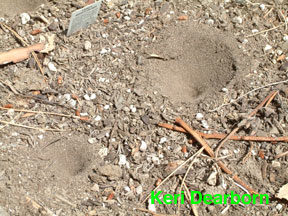
You probably know the lady bug and the praying mantis eat a variety of insect pests. But so do ground beetles, ant lions and paper wasps. The golden polistes, a large common paper wasp, is frequently sprayed and their papery nest knocked down from house eaves. Do they have a stinger? Yes, but they seldom sting people. These wasps prey on tomato worms and other caterpillars that dine on your flowers and vegetable garden.
The other predators you need are insect-eating birds: wrens, bushtits, California towhees, black phoebes and hummingbirds. That's right, hummingbirds are catching insects on the wing. This crew of birds can clean up the bugs in your yard in no time, but they won't come if you are spraying. Nobody wants to eat a toxic bug?
Hawks also play an important roll. Cooper's and sharp-shinned hawks will maintain a balance among your seed-eating birds. Red-tailed hawks hunt rodents and rabbits by day, while owls hunt them by night.
And while you might not think of a snake as something you want in your garden, think again. The gopher snake not only preys on gophers and mice, it is harmless to humans. It is such an efficient hunter, a rattlesnake doesn't want to compete with it. When a gopher snake moves in, the rattlesnake moves out.
Even a rattlesnake is providing a service by reducing rat and mice populations, but few people are comfortable having them around. To keep rattlesnakes away, provide habitat for their predators. Both red-tailed hawks and red-shouldered hawks prey on rattlesnakes. California kingsnakes are immune to rattlesnake venom and also eat rattlesnakes. The beneficial kingsnake is harmless to humans.
Super DefendersWith all the hype about various diseases swilling around us, there are a few animals that offer humans valuable protection. Case in point the species that started this joint effort, the western fence lizard.
For more on how the western fence lizard helps protect you from Lyme's disease check out my post on www.animalbytes.net .
West Nile virus is a real concern in Southern California. Removing standing water that offers mosquitos a breeding place is the first line of protection but there are a variety of predators that will help your efforts. Orb spiders with their classic webs are extraordinary insect hunters and mosquitos are on their menu. Admire that web, don't knock it down. Birds, that eat flying insects, like the black phoebe provide mosquito patrol during the day. While at night, bats are eating mosquitos by the ton.
Bats are vital members of the southern California ecosystem. I've seen big brown bats, Brazilian free-tailed bats and a western red bat in my neighborhood. We put up a bat box last fall and April 25 we noticed bats milling around the bat house at twilight. Good bye mosquitos!
Go NativeThere are few native animals I would deter from my garden. (Yes, I have had rabbits that munch my lettuce.
(Desert cottontail) The key word here is "native." Most infestations and seriously troublesome critters (from insects to rats) are non-natives, they have few predators and even the weather may encourage them to over reproduce.
Why invite wild animals into your garden? Many of them can be beneficial. But it is also a global issue. Southern California is one of the world's biodiversity hot spots, just like Borneo and the Amazon forest. Our native plants and animals are disappearing rapidly as their habitat is lost to human development. Some of these creatures are international residents. The hermit thrush that spent the winter in my yard is now in Canada or Alaska, while black-headed grosbeak and western tanagers have just returned from Mexico and Central America.
If you want to save the world, there is no better place to start than in your garden. I've had 114 native animal species in my yard, including 63 species of native birds. How about you?
How do you go about attracting beneficial wildlife to your garden? Check out my post "
Creating a Garden That Attracts Wildlife" on
AnimalBytes.net.
Technorati Tags:
garden,
gardening,
hobby,
california,
grow,
howto,
how-to,
outdoors,
losangeles,
wildlifeLabels: california, garden, gardener, gardening, hobby, how-to, howto, outdoors

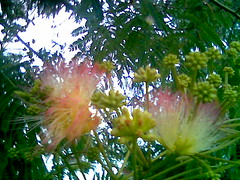

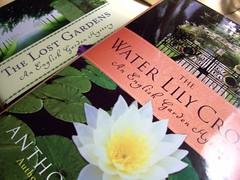

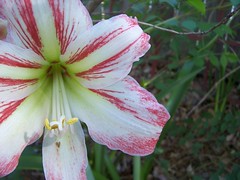


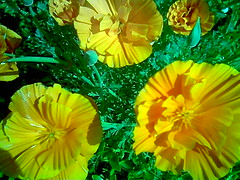




 Super Pollinators
Super Pollinators You probably know the lady bug and the praying mantis eat a variety of insect pests. But so do ground beetles, ant lions and paper wasps. The golden polistes, a large common paper wasp, is frequently sprayed and their papery nest knocked down from house eaves. Do they have a stinger? Yes, but they seldom sting people. These wasps prey on tomato worms and other caterpillars that dine on your flowers and vegetable garden.
You probably know the lady bug and the praying mantis eat a variety of insect pests. But so do ground beetles, ant lions and paper wasps. The golden polistes, a large common paper wasp, is frequently sprayed and their papery nest knocked down from house eaves. Do they have a stinger? Yes, but they seldom sting people. These wasps prey on tomato worms and other caterpillars that dine on your flowers and vegetable garden. 
